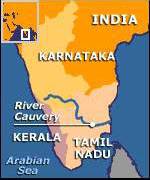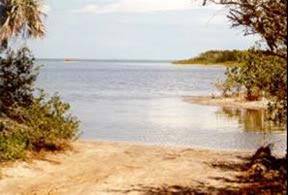| Wars Over Water Over the last few decades, there has been a growing speculation about the likelihood of an acute conflict over freshwater resources A ll living forms of the Earth, including humans, need water to survive. It is the only resource with no substitute and the demand for it is constant and growing. Over the last few decades, there has been growing speculation about the likelihood of an acute conflict over freshwater resources. Experts say the next World War would be fought over water scarcity. Freshwater resources – including issues of scarcity, distribution and quality – are likely to lead to intense political pressures. Although wars over water have not occurred, there is plenty of evidence showing that the lack of clean freshwater has been linked to poverty and has led to intense political instability.It is evident through history that water allocation and sharing has increased tensions between countries and states, particularly the role played by trans- boundary river resources. The number of international basins has grown from 214 in 1978 to 263 today. These international basins affect about 40% of the world’s population and account for about 60% of global river flow. Of these mainly 19 basins are shared by 5 or more riparian (dependent on water for agriculture etc.) countries: one basin – the Danube, has 17 riparian nations; five basins – the Congo, Niger, Nile, Rhine and Zambezi – are shared between 9 and 11 countries; and the remaining 13 basins – the Amazon, Ganges-Brahmaputra-Meghna, Lake Chad, Tarim, Aral Sea, Jordan, Kura -Araks, Mekong, Tigris-Euphrates, Volga, La Plata, Neman, and Vistula (Wista) – have between 5 and 8 riparian countries sharing them (Wolf, 2001). Water is a resource which can make good relations deteriorate and bad relations worse. Threats and disputes have increased across boundaries between Indians and Pakistanis and between Americans and Canadians. Water was the last and most controversial issue resolved in negotiations over a 1994 peace treaty between Israel and Jordan. Add to this the fact that water has been a cause of political tensions between Indians and Bangladeshis; Americans and Mexicans; and all 10 riparian states of the Nile . Despite so many complexities, historical record shows that water disputes do get resolved, even among bitter enemies. Some of the strongest enemies around the world have negotiated water agreements or are in the process of doing so. Secret "picnic table" talks have been held between Israel and Jordan since the unsuccessful Johnston negotiations of 1953-55. The Indus River Commission survived two wars between India and Pakistan. All 10 Nile riparians are currently involved in negotiations over cooperative development of the basin. Inter-State Water Disputes Act of 2002 of India provides the settlement of disputes relating to waters of Inter-State Rivers and River Valleys. The Act came into effect on August 28, 1956, has been modified from time to time. Section 14 was last amended on March 18 2002, to achieve the objectives set forth. The above Act has been used to set up several Tribunals to settle the inter-state water disputes. The Central Government of India has set up five Inter-State Water Disputes Tribunals so far, namely:- i. Godavari Water Disputes Tribunal ( April, 1969) ii. Krishna Water Disputes Tribunal ( April, 1969) iii. Narmada Water Disputes Tribunal ( October, 1969) iv. Ravi and Beas Waters Tribunal ( April, 1986) v. Kaveri Water Disputes Tribunal ( June, 1990) While the first three Tribunals have already given their final awards, the remaining two Tribunals are still adjudicating the issues referred to them. The Indus treaty took ten years of negotiations, the Ganges thirty, and the Jordan forty – all the while the water quality and quantity get degraded to a point where the health of dependent populations and ecosystems are damaged or even destroyed. Currently, there is no agency for the management of transboundary water resources. Several UN agencies, including UNEP, UNDP, UNESCO, WHO, FAO and UNIDO incorporate water related issues in their charter, as does the World Bank. Recently, all of these agencies collaboratively produced the Comprehensive Assessment of the Freshwater Resources of the World (CAFRW). However, none of these institutions incorporate mechanisms for the resolution of transboundary water resources disputes within its mandate. But there are still a number of initiatives related to river basin management regimes and institutions committed to bilateral and/or multilateral management of transboundary water resources. For the resolution of water disputes, effective international and regional agreements and water sharing and basin management are needed. For millions of people across the world the local source of water is the transboundary watercourse. In order to guarantee that water is used efficiently and responsibly, the appropriate distribution of water for all users (domestic, agricultural, industrial and environmental), is important. A balance between economic progress, public well being and environmental integrity must be reached in every basin. It is not surprising then that "water" and "war" are two topics being assessed together with increasing frequency all over the world. qNamita Dogra ndogra@devalt.org |

 Not only international but there are evidences of sub-national level disputes too, generally between tribes or states/provinces. In fact, there are many examples of internal water conflicts ranging from interstate violence and death along the Cauvery river in our own country. States affected by this dispute are mainly Tamil Nadu, Karnataka and Kerala. This is India’s age old and most talked about water dispute. Most of the major rivers in India are inter-state in character, having catchments/water sheds in two or more states. Often, water disputes arise amongst the basin states with regard to the use, distribution or control of the waters.
Not only international but there are evidences of sub-national level disputes too, generally between tribes or states/provinces. In fact, there are many examples of internal water conflicts ranging from interstate violence and death along the Cauvery river in our own country. States affected by this dispute are mainly Tamil Nadu, Karnataka and Kerala. This is India’s age old and most talked about water dispute. Most of the major rivers in India are inter-state in character, having catchments/water sheds in two or more states. Often, water disputes arise amongst the basin states with regard to the use, distribution or control of the waters.